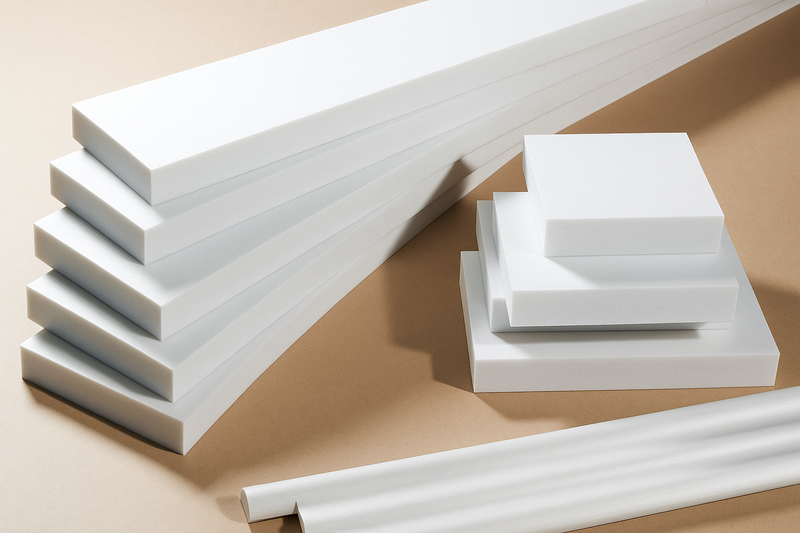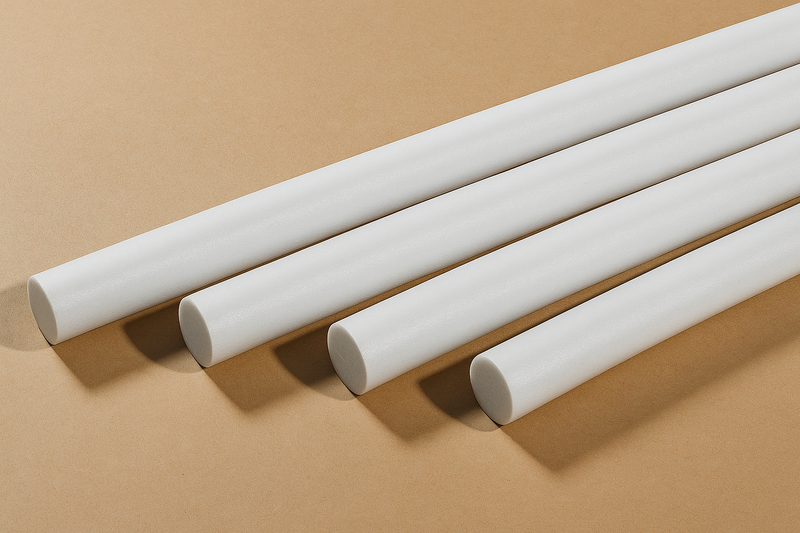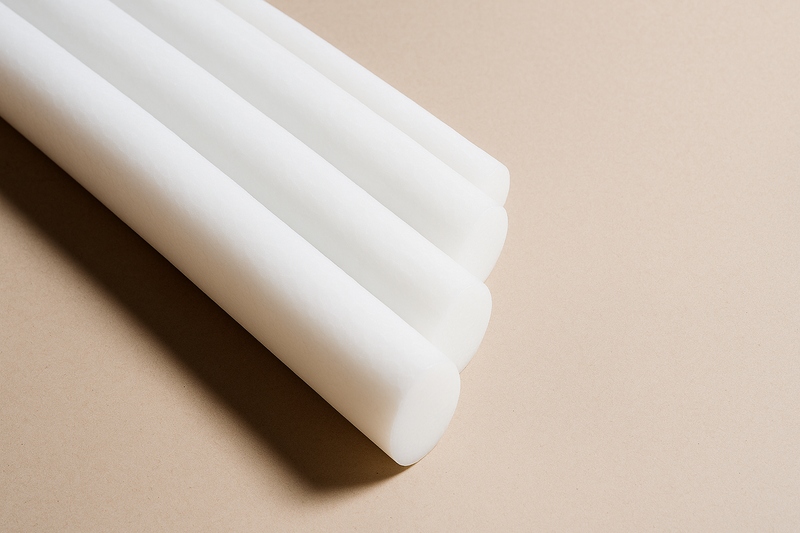At a glance
- Engineering plastics are replacing metals in vehicles, improving weight reduction, durability, and cost-efficiency.
- Acetal, Cast Nylon, PEEK, PET, and Polycarbonate enhance fuel systems, engine parts, electrical insulation, and safety features.
- Additional materials like PTFE, UHMWPE, and HDPE provide underbody protection, impact resistance, and chemical durability.
- These high-performance plastics contribute to safer, more efficient, and long-lasting vehicles.
The automotive industry has evolved tremendously over the past few decades. While vehicles earlier relied heavily on metal components, modern advancements in automobiles have shifted towards lighter, stronger, and more durable materials. And, engineering plastics have played a massive role in this transformation.
From engine parts to fuel systems, lighting, and even interior aesthetics, engineering plastics have replaced traditional materials like steel, aluminium, and rubber. The reason? They're lighter, more resistant to corrosion, and often outperform metals in high-heat and high-stress environments.
This article explores how engineering plastics are used in the automotive industry, focusing on the key materials that enhance vehicle performance, safety, and efficiency.
Why Engineering Plastics Are Replacing Traditional Materials in Vehicles
The shift from metal to engineering plastics isn't just a passing trend; it's a necessity. As the automotive sector pushes towards more efficient and sustainable manufacturing, plastics offer several advantages:
- Weight Reduction – Lighter materials mean better fuel efficiency and lower emissions.
- Thermal & Chemical Resistance – Essential for parts exposed to heat, oil, and fuels.
- Cost Efficiency – Plastics allow for cost-effective production compared to metal components.
- Durability & Safety – Many plastics are impact-resistant and corrosion-proof, extending vehicle lifespan.
Whether it's combustion-engine vehicles, hybrids, or electric cars, engineering plastics play a crucial role in improving overall performance.
Let's break down how different types of engineering plastics are used in specific automotive applications.
Key Engineering Plastics Used in Automotive Applications
Now that we know about the benefits of using engineering plastics in the automotive industry, let's explore some of the most critical engineering plastic materials and their applications that cater to the needs of the automotive industry.
Acetal for Precision & Low-Friction Performance
Used in:
- Fuel system components – Fuel caps, valves, and connectors.
- Powertrain and transmission parts – Gears, bearings, sliding elements.
- Interior mechanisms – Seatbelt buckles, window regulators.
Acetal, also known as POM (Polyoxymethylene), is a favourite in precision automotive engineering. Its low friction, high stiffness, and wear resistance make it an ideal alternative to metal gears and mechanical components.
In fuel systems, Acetal parts are used in fuel line connectors and fuel caps because they can resist gasoline, diesel, and ethanol-based fuels without degrading. In seatbelt systems, Acetal components allow for smooth locking and retraction, ensuring safety and ease of use.
Cast Nylon for Strength & Shock Absorption in High-Stress Parts
Used in:
- Suspension systems – Bushings, wear pads, and rollers.
- Engine mounts and timing chain guides – High-load-bearing parts.
- Pulleys and gears – Power transmission applications.
Cast Nylon is widely used for heavy-duty automotive components that require shock absorption, impact resistance, and self-lubrication. Compared to metals, Cast Nylon is lighter, reduces wear on surrounding components, and extends the overall part lifespan.
In engine mounts, Cast Nylon helps absorb vibrations and impact forces, reducing wear and tear on metal components. It also plays a key role in pulleys and chain tensioners, where weight reduction and long-lasting durability are crucial.
PEEK for High-Temperature Resistance in Performance Parts
Used in:
- Turbocharger components – High-heat environments.
- Braking systems – Brake fluid reservoirs, sensor housings.
- EV battery insulation – Electric vehicle applications.
PEEK (Polyether Ether Ketone) is one of the most thermally resistant engineering plastics, capable of withstanding temperatures over 250°C. This makes it essential in engine components, braking systems, and electric vehicle (EV) insulation.
In turbochargers, PEEK is used for seals and heat-resistant components because it can withstand extreme heat while maintaining its strength. In EVs, it is used in high-voltage battery casings, ensuring safety, longevity, and heat resistance.
PET for Electrical Insulation & Structural Stability
Used in:
- Wiring harnesses and battery insulation – Electrical protection.
- Ignition system housings – Protecting sensitive electronics.
- Sensor enclosures – Housing for key automotive sensors.
PET is known for its chemical resistance, dimensional stability and electrical insulation properties. As vehicles become more reliant on electronic components, PET is increasingly used in battery insulation, electronic control units (ECUs), and ignition systems.
PET is often found in battery enclosures and wiring systems, where it prevents heat buildup and electrical interference, improving vehicle safety and efficiency.
Polycarbonate for Strength & Clarity in Safety Components
Used in:
- Headlamp lenses and taillights – Automotive lighting.
- Sunroofs and instrument clusters – Transparent components.
- Dashboards and display panels – Digital interface covers.
Polycarbonate is ideal for sunroofs, transparent panels, and automobile lights since it is lightweight, impact-resistant, and UV-stable. It has better durability and is shatterproof than glass.
In headlamps, Polycarbonate is used instead of glass because it is lighter, more durable, and doesn't shatter upon impact, ensuring driver safety and visibility.
Other Engineering Plastics Used in the Automotive Industry
Beyond the five key plastics discussed above, several other engineering plastics play crucial roles in automotive manufacturing:
- PTFE (Polytetrafluoroethylene) is used in seals, gaskets, and fuel lines due to its exceptional chemical resistance and low friction properties.
- UHMWPE (Ultra High Molecular Weight Polyethylene) is commonly found in underbody shields and cargo liners, providing abrasion resistance and impact protection.
- HDPE (High-Density Polyethylene) is used in fuel tanks and impact-resistant panels. Thanks to its lightweight, durable, and chemical-resistant properties.
Each of these materials contributes to making vehicles safer, more efficient, and more cost-effective to produce.
Why choose ePol for Automotive Engineering Plastics in Australia
As a trusted engineering plastic supplier in Australia, ePol provides high-quality materials designed for automotive applications. We help manufacturers find the right plastic solutions to improve vehicle performance and longevity.
Our online ordering system makes sourcing engineering plastics easier than ever. With just a few clicks, you can:
- Browse and compare materials instantly.
- Check real-time stock availability.
- Place orders with fast nationwide delivery.
Whether you're in need of heat-resistant plastics for engine components or impact-resistant materials for vehicle exteriors, ePol has the perfect solution.
Engineering plastics are fundamental to modern automotive design, providing lightweight, durable, and cost-effective solutions for various vehicle components. From Acetal in fuel systems to PEEK in turbochargers, these materials are shaping the future of safer, more efficient, and high-performance vehicles.
For top-quality engineering plastics in Australia, visit ePol and explore our industry-leading materials today.








